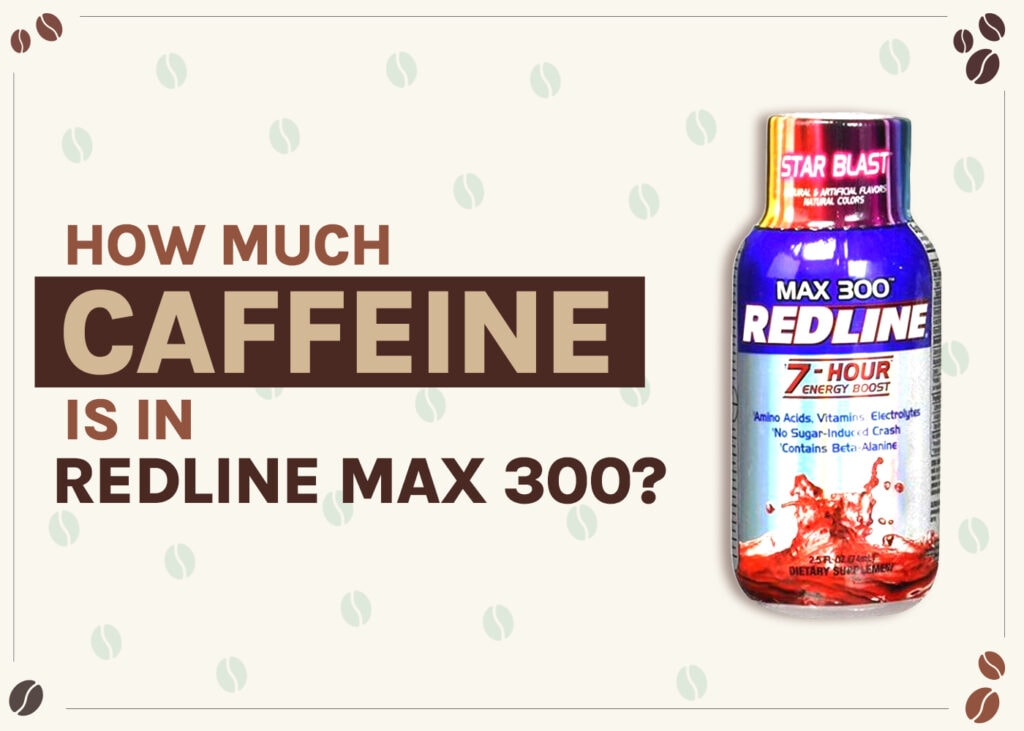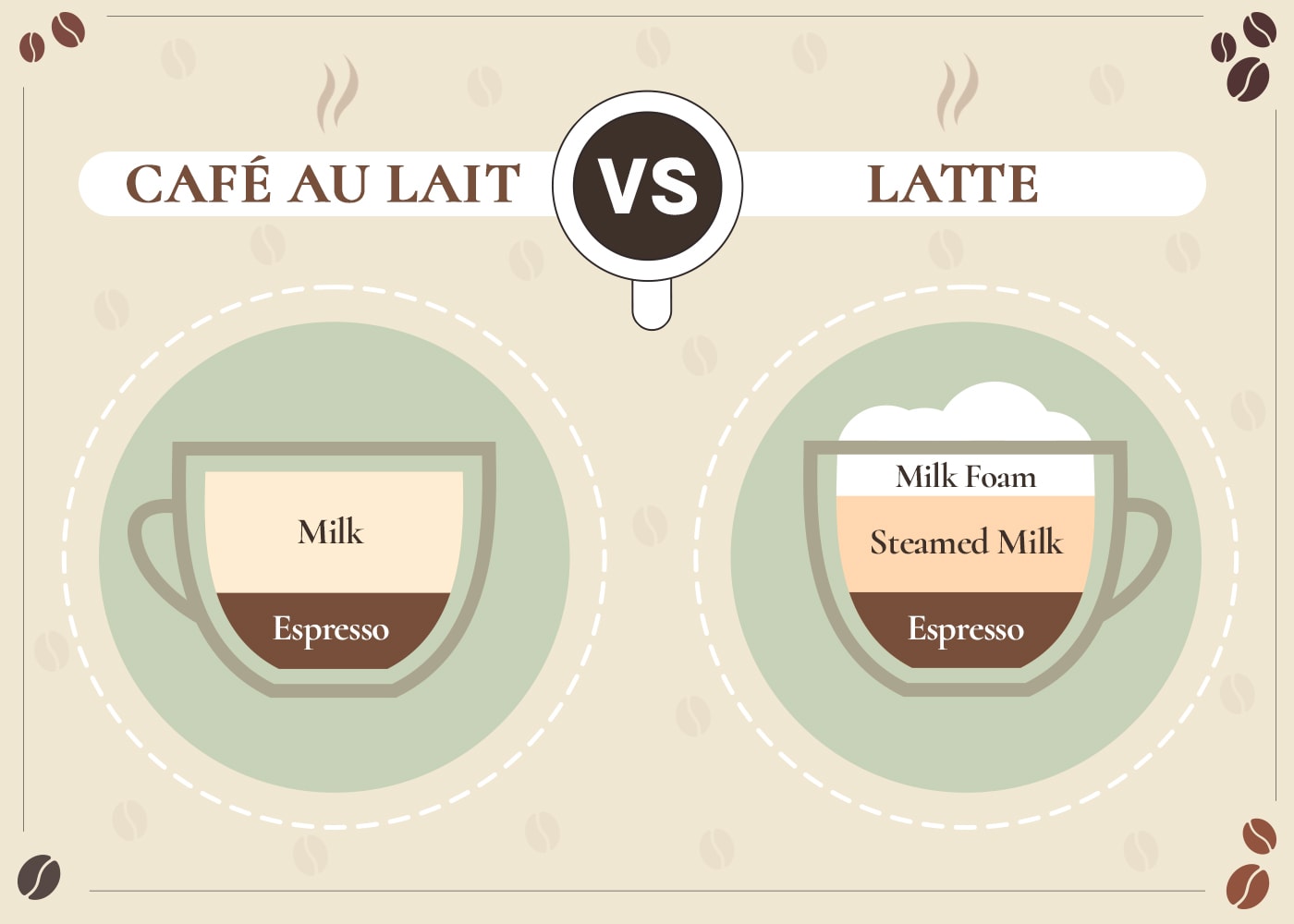
Ever since the arrival of 5 Hour Energy shots in 2004, the market for the tiny energy drinks stuffed full of caffeine has been growing by leaps and bounds. VPX/Redline, a beverage company, formed in 1993, came out with its own energy shot, Redline Max 300, a few years ago, and it has been a big hit since. Each 2.5 fluid ounce bottle contains 300 mg of caffeine: one of the highest amounts of all the energy shots on the market. If you’d like to see how Redline Max 300 stacks up to other energy drinks and shots, we have detailed info below.

How Much Caffeine does Redline Max 300 Contain?
Caffeine is a popular ingredient in energy drinks and, in most, is one of the first three or four ingredients (water is usually #1).. Redline Max 300 has 120 mg of caffeine per fluid ounce, and since each bottle is 2.5 fluid ounces, the entire (tiny) bottle contains 300 mg of caffeine. Indeed, Redline Max 300 has so much caffeine that the manufacturer, VPX/Redline, recommends only drinking half the bottle when you open it, keeping the other half for later The company recommends drinking it over a 7-hour period.
VPX/Redline doesn’t promote Redline Max 300 as an energy drink but as a pre-workout supplement.
https://www.instagram.com/p/BsJGT4zgE09/
Caffeine Content of Energy Drinks Similar to Redline Max 300
If you’re looking for an energy drink that will keep you focused, awake, and alert or give you energy for your next workout session, we compare some of the most popular below. We also have info on several other popular drinks with caffeine.
| Energy Drink | Caffeine (mg) | Calories | Carbohydrates (g) | Sugar (g) |
| Redline Max 300 | 300 mg | 8 | 1.45g | 0 g |
| 3D | 200 mg | 15 | 7g | 0 g |
| 5 Hour Energy | 200 mg | 4 | 1g | 0 g |
| Alani Nu | 200 mg | 10 | 6 g | 0 g |
| AMP Energy Boost | 71 mg | 220 | 58 g | 58 g |
| Bang | 300 mg | 0 | 0 g | 0 g |
| Beyond Raw Lit | 250 mg | 20 | 4 g | 0 g |
| C4 Energy | 200 mg | 0 | 0 g | 0 g |
| Celsius | 200 mg | 10 | 2 g | 0 g |
| Coca Cola | 48 mg | 139 | 10.6 g | 10.6 g |
| Regular Coffee | 70 mg | 2.4 | 0 g | 0 g |
| Ghost | 200 mg | 5 | 1 g | 0 g |
| Monster | 160 mg | 230 | 58 g | 54 g |
| Monster Zero Sugar | 140 mg | 10 | 3 g | 0 g |
| NOS | 160 mg | 200 | 54 g | 54 g |
| Red Bull | 80 mg | 110 | 29 g | 27 g |
| Rockstar | 160 mg | 250 | 63 g | 63 g |
| Zevia | 120 mg | 0 | 0 g | 0 g |
| Zoa | 160 mg | 15 | 3 g | 0 g |
All About Energy Drinks
Humans have sought out plants, products, and ingredients to boost energy for thousands of years. In Peru, the Andeans started using maca root for energy over 2000 years ago to help them survive the harsh conditions they faced at 13,000 feet (4000 meters) above sea level.
The “modern” energy drink was invented in Japan in the early 1960s. Similar to today’s energy shots, the product created in Japan, Lipovitan, was sold in small bottles that you could gulp down quickly. Fast forward to Austria in 1984 and the invention of Krating Daeng. While you might not be familiar with the energy drink, most will be familiar with the name it took when introduced to the United States: Red Bull. That was in 1997 and was the “birth” of today’s energy drink market.
In Japan, they did not use caffeine to make Lipovitan. Instead, it was another (supposedly) energy-boosting ingredient called taurine. Taurine is an amino acid that occurs naturally in the human body and is concentrated mainly in the brain, heart, and eyes. Taurine is considered a “conditional” essential amino acid. That means that it only becomes essential when a person is highly stressed or has an illness.
Taurine has several documented performance-enhancing qualities, including increasing a person’s oxygen uptake when they’re exercising. It also reduces muscle damage, improves a person’s strength and power, and reduces the recovery time needed after a strenuous workout.
Taurine is not a stimulant (although many believe that it is) but instead is a nervous system depressant. That is why today’s energy drinks don’t rely 100% on taurine to give their customers energy but instead load their recipes with plenty of caffeine.
https://www.instagram.com/p/BaUhRZcgu0e/
Fun Facts about Caffeine
No matter which energy drink you enjoy most, whether it’s Redline Max 300 or one of the other many products on the market, they all use caffeine to stimulate your nervous system, help you focus, and give you energy. Below are a few fun facts about caffeine that might surprise you.
- Caffeine, contrary to popular belief, is not addictive.
- Some shampoo brands put caffeine in their shampoo to thicken hair and prevent hair loss.
- Before humans ever used it to make coffee, we used the red fruit of the coffee shrub to make wine.
- The stimulating effects of caffeine are thought to have been discovered in 800 A.D. by an Ethiopian goat herder.
- High doses of caffeine are toxic to several insects and act as a natural pesticide.
- People who drink a lot of coffee wake up with caffeine withdrawal every morning but usually write it off as the “morning depression.”
- Caffeine has been shown to increase a person’s athletic ability by approximately 3%.
- It takes about 20 minutes for the effects of caffeine to be felt by most coffee drinkers.
- Caffeine is the most socially acceptable drug in the world.
- Caffeine increases the body’s dopamine production, the “feel good hormone,” and can make you feel happier.
- The chemical name for caffeine is 1,3,7 trimethyl xanthine.

How Do You Like Your Caffeine?
For most people, their caffeinated drink of choice is coffee, but caffeinated soft drinks and tea are also extremely popular. Energy drinks are the most popular among younger folks, students, and truck drivers. They enjoy energy drinks because they’re convenient, easy to purchase, and provide quick energy and focus. Whatever the reason you drink them, energy drinks featuring caffeine are here to stay.
See Also: How Much Caffeine Is In Redline Xtreme Shot?
- https://www.ncbi.nlm.nih.gov/pmc/articles/PMC4320741/
- https://www.caffeineinformer.com/caffeine-content/redline-power-rush#
- https://gobigenergy.com/blogs/further/the-history-of-energy-drinks
- https://www.healthline.com/nutrition/benefits-of-maca-root#What-is-maca?
- https://www.ncbi.nlm.nih.gov/pmc/articles/PMC8152067/
- https://www.motherjones.com/environment/2014/03/caffeine-murray-carpenter-energy-drink-keurig-cup-coffee/
- https://www.sciencedirect.com/science/article/pii/S0278691513007175















